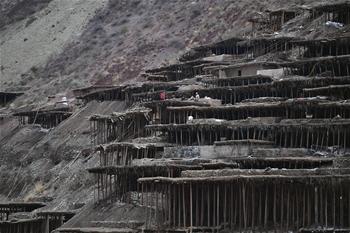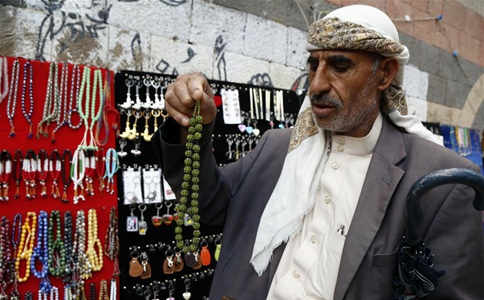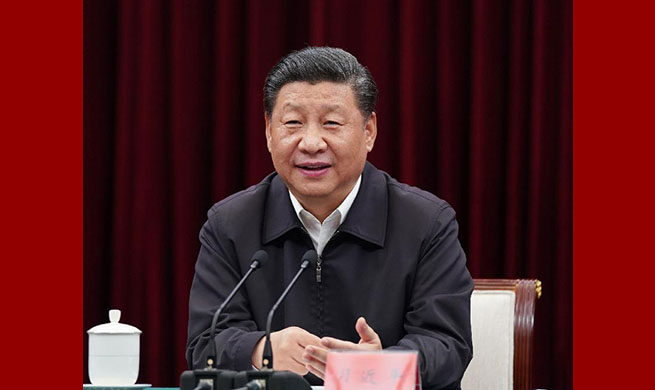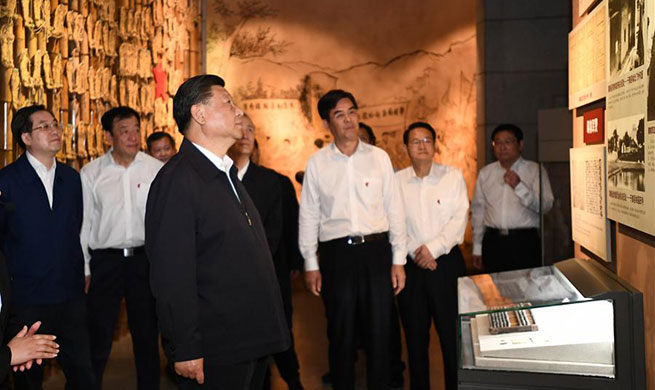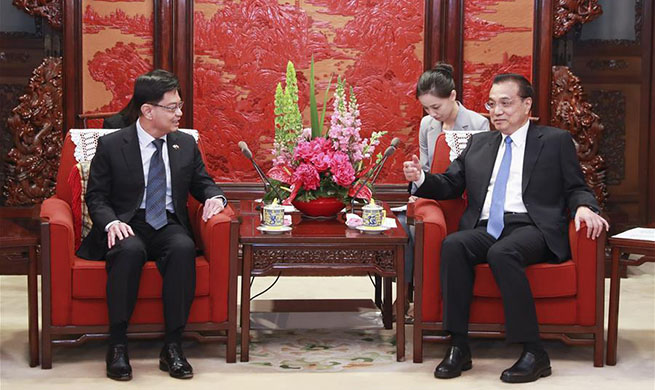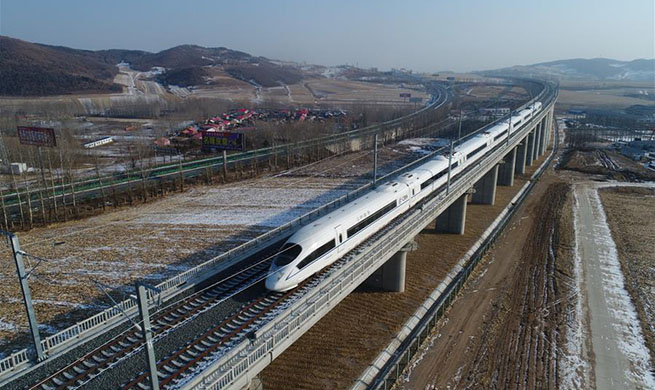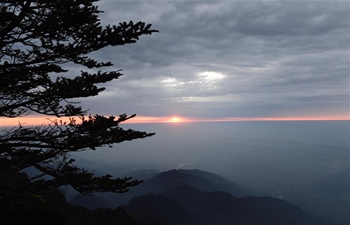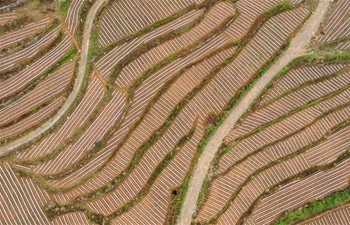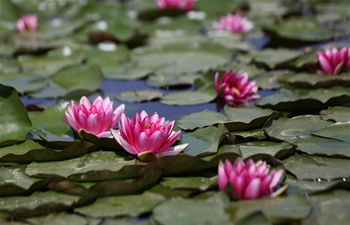by Pankaj Yadav
NEW DELHI, May 23 (Xinhua) -- Though the election results are yet to be formally announced, it's a foregone conclusion that the ruling alliance in India, the National Democratic Alliance (NDA) led by the Bharatiya Janata Party (BJP), would secure a nationwide landslide victory in the just-concluded 17th general elections.
Main opposition party the Indian National Congress' (INC) president Rahul Gandhi conceded defeat and congratulated Prime Minister Narendra Modi over his victory.
Addressing media persons at his party headquarters in New Delhi, Gandhi said, "Today the election results have been announced. A new prime minister will take over. Our countrymen have given their verdict, and we respect it. The BJP and the INC have different ideologies and visions. Modi and the BJP have their ideology, and the INC has its own. We will continue with our ideology and vision. There are many people in the country who believe in the INC's ideologies and policies."
Buoyed by the impressive election results, Modi tweeted, "Together we grow. Together we prosper. Together we will build a strong and inclusive India. India wins yet again! Victorious India."
The BJP alone is most likely to win over 300 constituencies, way ahead of its nearest rival, the INC which is expected to win in only 50 constituencies.
During the last elections in 2014, the BJP had won a record number of 282 constituencies, exceeding the halfway mark of 272, out of the total 543 constituencies that went to polls.
The major factors that worked in BJP's favor were Modi's successful bid to infuse the spirit of nationalism among the countrymen, and amicably addressing the issue of national security much to the comfort.
Put together, the BJP and its alliance partners, i.e. the National Democratic Alliance (NDA), seems winning in 347 constituencies, more than its tally in last elections held in 2014.
Indian parliament's lower house Lok Sabha constitutes of 545 lawmakers. Every five years, elections are held for the 543 parliamentary constituencies.
This year's polls were held in 542 constituencies, after the election was cancelled in one constituency in southern state Tamil Nadu where votes would be polled at a later date.
While the BJP seems winning over 300 seats on its own, its pre-poll alliance partners Janata Dal (United) seems winning 15, the Shiv Sena 18, Loktantric Janshakti Party (LJP) six, and the Shiromani Akali Dal (SAD) two seats.
The "strategic alliances" entered by the BJP with smaller political parties in different states paved the way for its impressive victory, say political analysts.
"Despite being the biggest political party, the BJP yielded and gave space to its state-level alliance partners, and struck perfect coalitions, particularly in the country's eastern and north-eastern states. But, on the other hand, the main opposition party the Indian National Congress (INC) chose to keep a high ego and failed to forge fruitful alliances, and finally found itself as a big loser," Prof. Sanjay Lodha, a political scientist in western state of Rajasthan, told Xinhua over phone.
He further stated that various other factors like the "strong and corruption-less" government led by Modi, popular programmes directly benefiting the poorest of the poor by providing them with direct cash in their bank accounts, housing and LPG connections, during the past five years, also contributed to its victory.
According to Prof. Lodha, the election results also bring home the point that the BJP has got a strong cadre-base and an able leader, the two things the opposition lacked.
The able leadership and political acumen provided by Modi's Man-Friday and BJP President Amit Shah also significantly led to the party's marvelous win. While Modi ran a smooth government for the past five years, it was Shah's strategy which brought laurels for the party in states like West Bengal where the BJP improved its tally from two to 18.
Coming from the same state, i.e. Gujarat, the Modi-Shah duo have been a perfect pair for more than three decades. While Modi honed his governance skills, Shah moved in tandem perfecting the art of making a strong organisation-base for the BJP.
A senior state government officer in West Bengal said that perhaps the BJP has learnt by heart the art of attracting the Hindus' votes. "Till now, the so-called secular political parties in India followed the policy of appeasing the Muslims, but it's certain now that the BJP has perfected the art of attracting the Hindus' votes. In West Bengal there are over 25 percent Muslims, while the rest are mostly Hindus. The BJP succeeded in getting the Hindus' votes in this election," he added, on condition of anonymity.
The officer further stated that the "aggressive stance" taken by West Bengal Chief Minister Mamata Banerjee to counter BJP's campaign in the state, also proved counter-productive. "The optimum use of media and money by the BJP to propagate its campaign also helped increase its tally in West Bengal from two to almost 18," added the officer.
Throughout its campaign, the BJP relied heavily on its slogans like "Fir Ek Baar Modi Sarkaar" (Once Again Modi Government), "Main Bhi Chowkidaar" (I am a Watchman Too) which actually caught the people's imagination and struck the right chord. The social media campaign unleashed by the BJP also brought in huge dividends for the BJP.
There were over 900 million voters who were eligible to cast votes in more than one million polling stations set up across the length and breadth of the country to hold the elections.
According to the Election Commission of India (ECI) figures, there were around 84.3 million new voters who were added since the last parliamentary polls held in 2014, out of which 15 million voters were in the age ground of 18-19 years.
In all there are 2,354 registered political parties in India, out of which there are seven recognized national parties and 59 recognized state parties which participated in the general elections.
The elections took place in seven different phases spanning 39 days, from April 11 till May 19.
